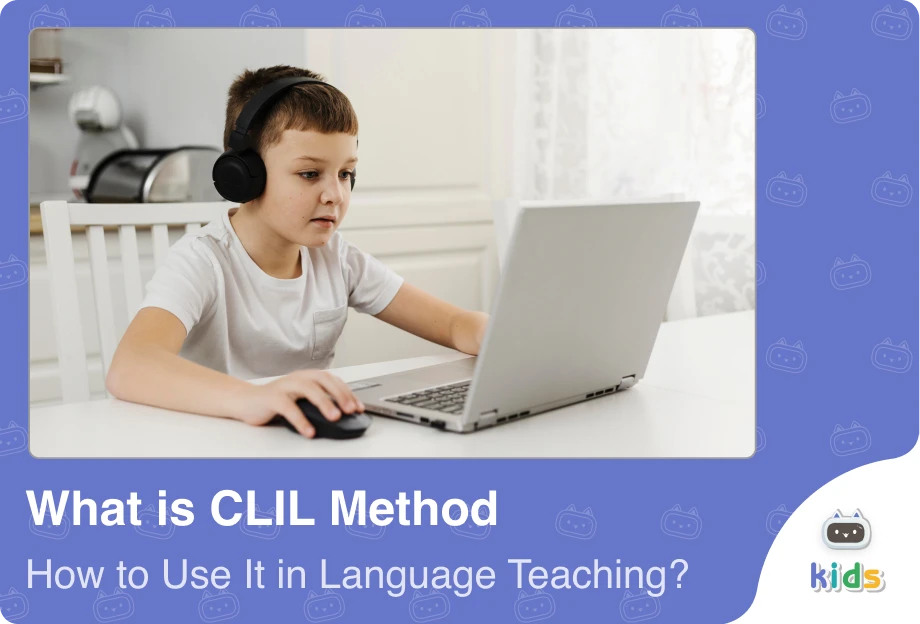Learning English can be an exciting adventure, especially for children! Integrating games into language learning not only makes the process more enjoyable but also enhances retention and engagement. In this blog post, we will explore 10 fun and educational games that can help children improve their English skills. From interactive online platforms to classic board games, these activities are designed to boost vocabulary, grammar, listening, and speaking skills while keeping young learners entertained. Get ready to discover how playtime can become a valuable part of your child’s language-learning journey!
1. Simon Says
A classic game that helps children improve their listening skills and follow instructions in English. The leader gives commands starting with “Simon says…” and the children must follow the instructions only if they hear “Simon says” at the beginning.
How to Play:
-One player is chosen to be “Simon.”
-Simon gives commands such as “Simon says touch your nose.”
-Players must follow the commands only if they start with “Simon says.”
-If Simon just says “Touch your nose,” without the “Simon says” part, those who follow the command are out.
-The last player remaining wins and becomes the next Simon.
2. Scrabble Junior
A simplified version of the popular word game Scrabble, designed for younger players. It enhances vocabulary and spelling skills by challenging children to create words using letter tiles. And if you’re having difficulty finding words, you can choose your words by benefiting from hundreds of different videos tailored to different interests on EnglishCentral Kids.
How to Play:
-Each player takes turns drawing letter tiles and placing them on the board to form words.
-Words can be formed horizontally or vertically.
-Points are awarded based on the length and complexity of the words.
-The player with the most points at the end of the game wins.
3. Word Bingo
Create bingo cards with English words instead of numbers. As the caller announces words, children mark them on their cards. This game helps with word recognition and vocabulary building.
How to Play:
-Prepare bingo cards with a grid of words that the children are learning.
-The caller randomly selects and announces words from a list.
-Players mark the called words on their bingo cards.
-The first player to mark a complete row, column, or diagonal shouts “Bingo!” and wins.
4. Hangman
A fun way to practice spelling and vocabulary. One player thinks of a word, and the others try to guess it by suggesting letters. Each incorrect guess brings the stick figure closer to being “hanged.”
How to Play:
-One player thinks of a word and writes down a series of blanks representing each letter.
-Other players take turns guessing letters.
-Correct guesses are filled in on the blanks; incorrect guesses result in drawing a part of the hangman figure.
-The game continues until the word is guessed or the hangman is fully drawn.
6. Charades
A lively game that encourages children to act out words or phrases without speaking, while others guess what they are portraying. This game enhances vocabulary and understanding of context.
How to Play:
-Write down words or phrases on slips of paper and place them in a hat.
-Players take turns drawing a slip and acting out the word or phrase without speaking.
-The other players try to guess what is being acted out.
-The player who guesses correctly gets to act next.
6. Memory Card Game
Create pairs of cards with matching English words or pictures and words. Children take turns flipping over two cards at a time to find matches, reinforcing their vocabulary and memory skills.
How to Play:
-Lay out a set of cards face down in a grid.
-Players take turns flipping over two cards to find a matching pair.
-If a match is found, the player keeps the pair and gets another turn.
-The game continues until all pairs are found. The player with the most pairs wins.
7. Pictionary
A drawing game where players draw a word or phrase, and others guess what it is. This helps children learn new words and improves their ability to describe things in English.
How to Play:
-Divide players into teams.
-One player from each team draws a word or phrase while their teammates try to guess what it is.
-No words or letters can be used in the drawing.
-The team that guesses correctly in the shortest time wins.
8. Story Cubes
Roll dice with pictures on them and use the images to create a story in English. This game encourages creativity and helps children practice constructing sentences and narratives. If you’re having difficulty finding a story or don’t want to waste time finding one, you can easily choose from hundreds of stories in our videos on EnglishCentral Kids, tailored to different levels and interests.
How to Play:
-Roll a set of story cubes, each showing different pictures.
-Use the pictures to create a story, forming sentences and connecting the images in a coherent way.
-Players can take turns adding to the story or create their own individual stories.
9. Flashcard Games
Use flashcards with pictures and words to play various games like matching, memory, or even creating simple sentences. Flashcards are versatile tools for reinforcing vocabulary and concepts.
How to Play:
-Create or purchase a set of flashcards with pictures and corresponding words.
-Play matching games where players match pictures with words.
-Use the flashcards to form simple sentences or play a memory game by matching pairs.
-Flashcards can also be used for quick drills or review sessions.
10. Sh! It’s a Secret
In this game, participants are given a specific word that they must incorporate into a short speech or presentation without revealing the word itself. The goal is for others to guess the hidden word based on the speech content.
How to play:
-Prepare small pieces of paper with different words written on them. Each participant randomly selects a word that they will use in their speech.
-Sit in a circle or gather around a designated speaking area.
-Each participant takes turns delivering a short speech or presentation (1-2 minutes) on any topic they choose.
-The challenge is to seamlessly integrate the assigned word into their speech without making it obvious.
-Players can ask questions or discuss clues from the speech to deduce the hidden word.
-If no one correctly guesses the word after a participant’s speech, the speaker earns a point.
-If any participant correctly identifies the hidden word, they earn a point.
-Rotate turns so that each participant has an opportunity to deliver a speech and guess others’ hidden words.
BONUS: Gamify English
Especially using the features of EnglishCentral, you can create new games for your children. While watching videos and having fun, you can create your own point system to make it more motivating. You can prepare flashcards with the words they learn from their vocabulary exercises to make learning words more enjoyable and memorable. With MiMi, our AI-powered tutor, you can role-play daily life topics or create interactive stories. These approaches provide a fun learning experience and increase your children’s motivation to learn English.
Frequently Asked Questions About Games for Children to Learn English
Why are games effective for children to learn English?
Games make learning English enjoyable and engaging for children. They provide a fun environment where children can practice language skills naturally through play. Games also promote active learning, encourage participation, and help improve retention of vocabulary and grammar.
What types of games are suitable for different age groups?
Games can be adapted to suit different age groups and language levels. For younger children, simple games like memory matching or word bingo are effective. Older children may enjoy more complex games involving storytelling, role-playing, or word association.
How can games help improve specific language skills like vocabulary or grammar?
Games are versatile tools that can target specific language skills. Vocabulary can be enhanced through games like word bingo or flashcard activities. Grammar skills can be reinforced through games that involve sentence construction, such as sentence relay or story chain.
How can games support cultural and linguistic diversity in language learning?
Games can introduce children to different cultures, traditions, and languages through themed activities or storytelling. Incorporate games that feature diverse characters, settings, and language contexts to promote cultural awareness and appreciation.
What are the benefits of using CLIL in language learning?
The benefits of using CLIL in language learning are:
-Improved language proficiency through immersive learning.
-Enhanced cognitive skills through content-related tasks.
-Greater learner motivation and interest.
-Development of a more comprehensive understanding of subject content.
-Greater involvement in real-life language use and contexts.
-Development of critical thinking and problem-solving skills.
What are the challenges in Content and Language Integrated Learning?
Challenges in CLIL include:
-High requirements for teachers to be competent in both subject matter and language.
-A high need for appropriate materials and resources.
-The potential for an increased cognitive load on students.
-Possible resistance from students or parents unfamiliar with this approach.
-Effective balancing of language and content objectives.
The elements of a CLIL lesson in foreign language teaching
A CLIL lesson typically includes the following elements:
Content: Topic-specific headings or themes.
Communication skills: Language skills (listening, speaking, reading, writing) related to the content of the topic.
Cognition: Cognitive skills such as analyzing, evaluating, and synthesizing information.
Culture: Provides cross-cultural understanding and awareness.
Who is CLIL suited for?
CLIL is suitable for students of all age groups. A wide range of students, from primary school to higher education, can use this method. It is also highly effective for students in bilingual or multilingual education systems. Additionally, individuals participating in vocational or professional training programs, or anyone who wants to improve their language proficiency in a meaningful context, can benefit from CLIL. CLIL lessons can be adapted according to the language level of the learners and the complexity of the content, so that language learners of all levels can benefit from this method.
How do teachers benefit from CLIL?
CLIL allows teachers to develop professionally through interdisciplinary teaching. This method enables teachers to gain a deeper understanding of both content and language pedagogy. It also helps teachers to use the target language more effectively and increase their language proficiency. CLIL offers teachers innovative and creative teaching practices and increases student motivation and achievement in their classrooms. Through CLIL, teachers can engage their students in learning experiences that are more meaningful and connected to the real world.
Frequently Asked Questions About What is CLIL Method and How to Use It in Language Teaching
Is CLIL appropriate for language learners at all levels?
Yes, CLIL can be modified for all skill levels; however, careful preparation is needed to match learners’ language competency to the intricacy of the material.
Which subjects are appropriate for CLIL instruction?
CLIL can be used to teach any subject, including math, physics, history, and the arts.
Does using CLIL require teachers to speak the target language well?
Teachers need a solid grasp of both the subject matter and the target language. They can help students learn the language by using techniques like scaffolding.
How can educators evaluate students enrolled in a CLIL program?
A range of formative and summative assessment techniques should be used in CLIL assessments, which should take into account both language competency and subject knowledge.
You can access everything your child needs to learn English on a single platform! With 25-minute live lessons guided by teachers specialized in child education, entertaining and instructive interactive videos designed for child development, vocabulary learning tools, the AI Tutor MiMi, quizzes, and interactive activities, EnglishCentral Kids offers a personalized and quality education plan tailored to your child’s needs at affordable prices. How about registering for EnglishCentral Kids now and starting your child’s English learning journey?











